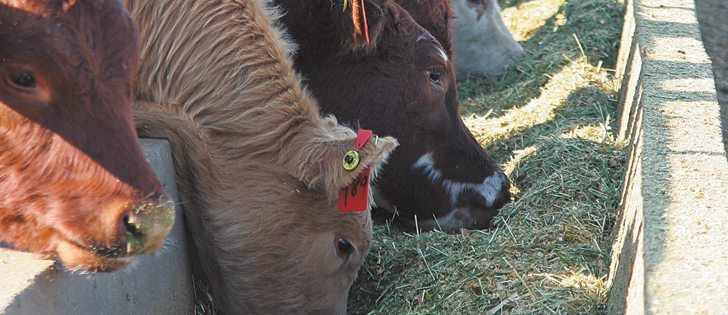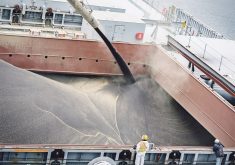In an historical context, prices for fed and feeder cattle are still excellent.
Still, you couldn’t help but wince last week as the Chicago live cattle nearby contract fell US10.625 cents per pound, or almost eight percent. Prices fell about $13 over the last two weeks of September.
The Canfax Canadian cash steer weighted average fell almost C$9 last week to $160.73 per hundredweight from the previous week.
Alberta fed cattle prices are now below year ago levels for the first time since the spring of 2013.
Read Also

Russian wheat exports start to pick up the pace
Russia has had a slow start for its 2025-26 wheat export program, but the pace is starting to pick up and that is a bearish factor for prices.
Feedlots can’t afford the high prices for calves and yearlings as the fed price falls, so feeder prices are also dropping.
The Canfax feeder steer average fell $12.59 per cwt. last week, and the heifer average fell $12.33.
As a result, some of the shine has come off this golden market, as it inevitably must, but there is not too much to worry about.
One reason for the dropping fed cattle price is that feedlots in the United States and Canada are behind in their marketing, and carcass weights are getting to record high levels.
It was more economical for feedlots to feed existing cattle to heavier weights than to bring in expensive replacements.
Ron Plain of the University of Missouri said the average U.S. steer dressed weight for the week ending Sept. 19 was 923 pounds, a record high that was up four lb. from the previous week and up 36 lb. from the same week last year.
The steer carcass weight in Canada was 921 pounds, up 44 lb. from the same time last year.
Beef prices fell as more beef per carcass became available during a seasonally weak time for beef demand, and that dragged down cash cattle.
The price fall of recent weeks is greater than what many expected, but a decline is not unusual in early autumn as market-ready cattle numbers rise and beef demand drops off from the summer.
Traditionally, prices rise again in November as market-ready supply tightens and beef demand picks up for the holiday season.
The price drop this fall could be intensified by the fact there is simply more room to fall from the lofty levels seen this summer.
The weak loonie is helping provide a partial cushion to Canadian producers. Fed prices in Canada are down about 10 percent in the past month, while U.S. prices are down 15 percent.
Canfax believes a seasonal rally in Canada going into November is possible. The Chicago market is strongly technically oversold, so there is hope for recovery there.
Analyst Kevin Grier of the Canadian Cattle Buyer said placements into feedlots during the spring and summer were below year ago numbers, so the marketings in coming months should also be below a year ago, reinforcing the idea of a rebound by the end of the year.
However, the strength of the rebound will be weakened if packers are buying during this dip to fill up the supply they’ll need at the end of the year.
The strength of the loonie will also be a factor, as will the pace of beef exports.
U.S. beef exports in the last four weeks were 23 percent behind the pace in the same period last year, reflecting the high price of beef and the strong American dollar.
Looking ahead to next year, the U.S. Department of Agriculture sees U.S. beef production rising 5.9 percent to 24.93 billion lb.
It expects the annual average price for steers to be $147 to $159, which is a broader range from the current year projection of $152 to $155.















